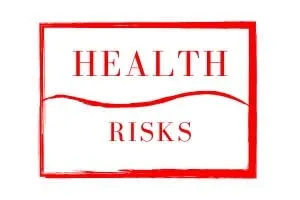What You Need to Know About Backflow Testing
Many people take clean drinking water for granted, they believe that they can just turn the faucet on in their room and it will be readily available. However, this isn’t always the case, especially if the home is experiencing backflow issues. Being knowledgeable about backflow, including its risks, how to prevent it, and the importance of backflow testing can keep everyone in the home soon safe and the drinking water as clean as possible.
Potential Health Risks of Not Performing Backflow Testing

Backflow is the unwanted flow of water in the home in the reverse direction. It leads to contamination of drinking water, which can result in some very serious health risks to everyone in the home.
The contamination that happens as a result of backflow comes from one or more of a few different sources – chemicals, pesticides, metals, organic compounds, and biological components like microorganisms from sewer water and human waste. Backflow testing is very important to ensure no backflow contamination is happening.
Some of the health risks and symptoms of contamination from backflow include fever, nausea, diarrhea, vomiting, abdominal pain, a burning sensation in the mouth, neurological effects (dizziness, headache, muscle weakness), and even cancer with long term exposure.
How to Prevent Backflow
Backflow in the home normally happens due to two different plumbing issues – back-siphonage or backpressure. Back siphonage happens as a result of the water supply being either drained down or interrupted, as the supply pressure drops lower than that of the system.
Backpressure is the opposite, which is more common because of the thermal pressure that exists in unvented heating systems. Backflow in this case is due to higher pressure in the system than that in the water supply.

Backflow testing is essential to verify that backflow is occurring so that the problem can be appropriately diagnosed and fixed. Even without obvious signs of an issue, backflow testing should still be performed on an annual basis.
Luckily, backflow prevention devices exist to help prevent backflow from happening. A licensed plumber can install one at various points in the plumbing system that are most at risk. An example of a backflow prevention device is a backflow preventer valve.
What Homeowners Should Do If They Suspect Backflow
If you suspect backflow, call a licensed plumber immediately for backflow testing and treatment. Immediately close off any accessible water valves (normally located in the basement) to stop the flow of water into the home while you wait.

Signs of backflow include discoloration of the water coming from the faucets (brown, yellow, etc.), a strong smell of sulfur, suddenly slow or even interrupted water flow, bad tasting water, obvious rust particles or sediment, and slowly draining drains.
While these can be related to other, potentially more minor issues, because of the risk they should always be taken seriously. Backflow is not an issue homeowners should attempt to handle on their own.
Polluted water can have serious health repercussions, and can even damage the pipes or the home depending on its severity. Make sure to have regular backflow testing performed and contact a plumber as soon as possible if backflow is suspected. It may be a matter of life and death.
About Hall's Plumbing
Hall's Plumbing opened in Woodland, California in 1995. Since then, they have been voted 1st one of Yolo County’s “Best” list multiple years in a row. No matter your plumbing needs, Hall's Plumbing’s well-qualified, knowledgeable technicians are always dedicated to providing all of their customers with quality service.

